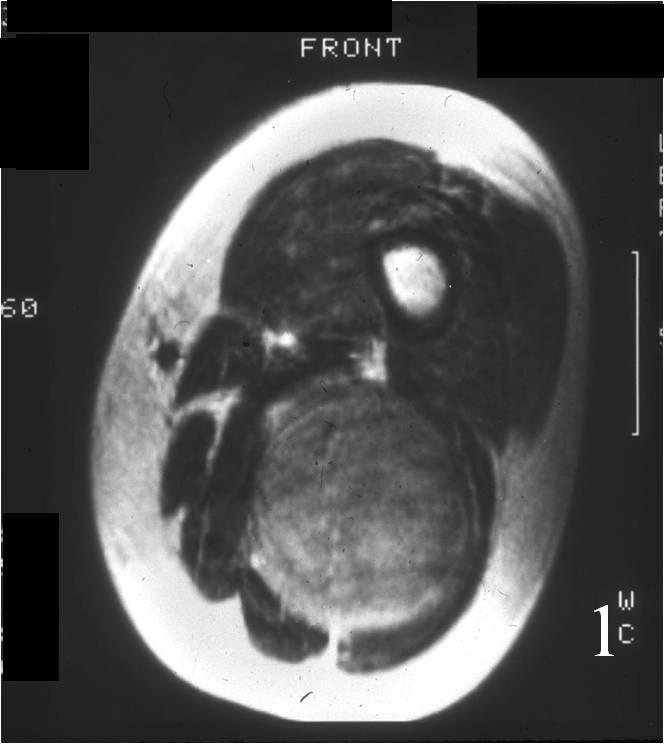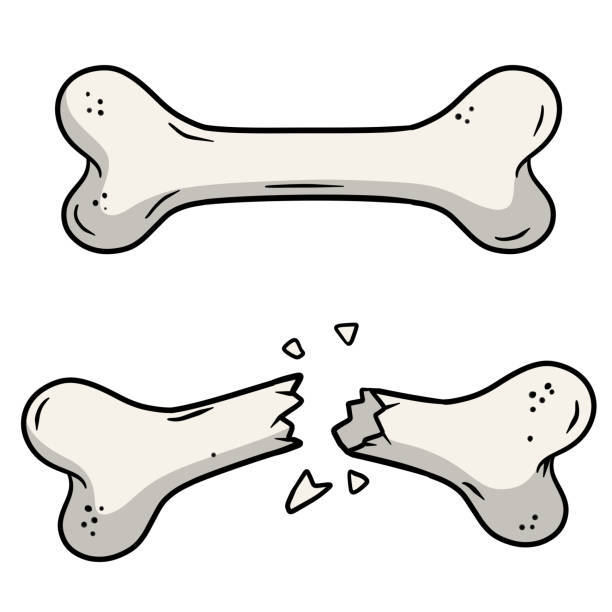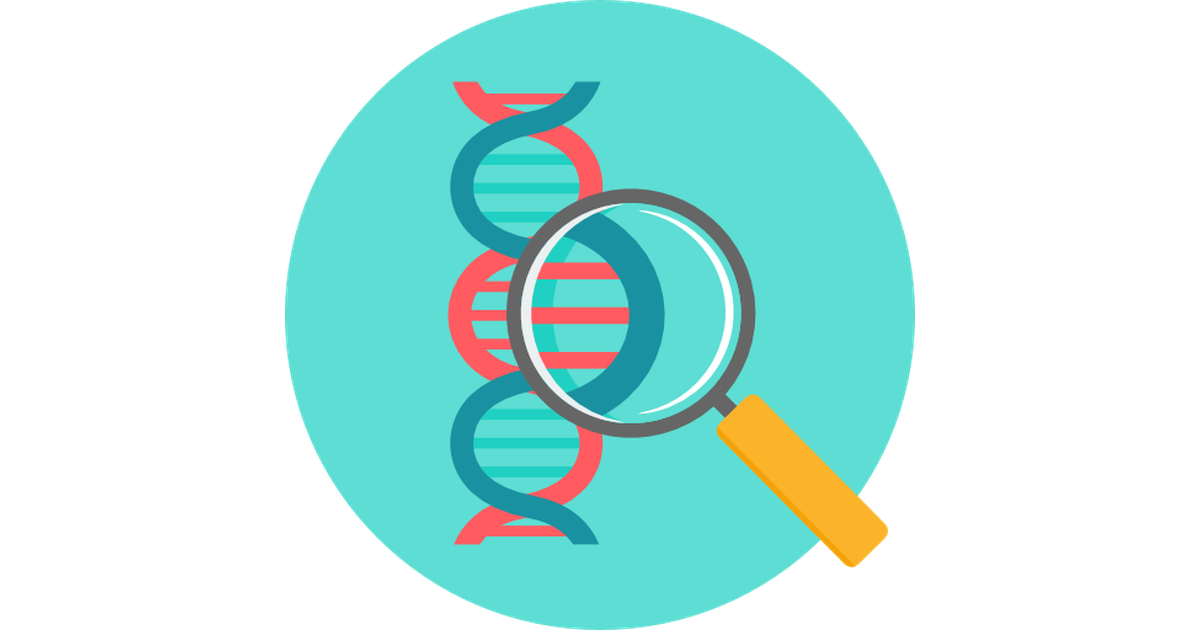Neurofibroma
A neurofibroma is a somewhat rare, benign (non-cancerous) soft-tissue tumor that can occur on any peripheral nerve. It presents as a small mass with mild to no symptoms. Surgical removal is a common treatment for nuerofibromas.

A neurofibroma is a somewhat rare, benign (non-cancerous) soft-tissue tumor that can occur on any peripheral nerve. It presents as a small mass with mild to no symptoms. Surgical removal is a common treatment for nuerofibromas.





Neurofibroma is a benign (non-cancerous) tumor of peripheral nerves. They present as small masses with mild to no symptoms. While neurofibroma can be a solitary entity, it may also be associated with neurofibromatosis (NF-1), which is a genetic condition where those affected develop numerous peripheral nerve tumors, including neurofibromas or schwannomas. This soft-tissue tumor occurs in all ages and is equally common in males and females.





Neurofibroma is a non-cancerous soft-tissue tumor that arises from any peripheral nerve. Neurofibroma does not metastasize or spread throughout the body. Due to its location, there is a risk of nerve damage associated with neurofibroma. It is important to seek and consult a doctor, obtain proper radiographic studies, and confirm the diagnosis, as some differential diagnoses include schwannoma, and malignant peripheral nerve sheath tumor (MPNST).
Radiographic imaging is used to help form a diagnosis of neurofibroma. These include X-Ray, MRI, CT and Bone Scans.

The primary treatment of neurofibroma consists of surgical excision. There is some risk of neurological damage is the tumor involves a major nerve. However, once removed, there is a low recurrence rate. Since neurofibroma is a benign soft-tissue mass, chemotherapy and radiation are not needed to treat.

Surgical treatment includes wide or radical resections to remove the complete tumor and additional margins. The removal of additional, surrounding margins ensures that the tumor is completely removed and decreases the chances of the tumor coming back.

I've seen many doctors and I can confidently attest Dr. Wittig is the preeminent orthopaedic specialist. He is genuinely kind and caring, as he demonstrated by completely addressing my concerns and compassionately relating to what I was dealing with. He clearly outlined the plan of attack, and recommended the two additional doctors who would become part of my 'team'. Dr. Wittig was so effective in allaying our fears and bringing us optimism. My surgery was significant, but I was up and walking the next day and back at the gym 5 weeks later. This is further testament to Dr. Wittig's skill. He saved my leg and my life, and I feel so very blessed to say he is my doctor. I have already recommended him to others, and I will continue to do so. I would trust him with my closest family and lifelong friends. BEST DOCTOR EVER.
S.G.

Myself and my amazing team are dedicated to saving your life and your limb. Losing a limb because of a tumor can be a terrifying experience. But, it does not have to be the only option. I’ve spent 20+ years as a Board-Certified Orthopedic Surgeon and Orthopedic Oncologist.
I’ve devoted my career to helping children and adults afflicted with bone and soft tissue masses by performing complex limb saving surgeries. Most patients can have their limb saved, which may require innovative techniques.
Patients afflicted with musculoskeletal tumors have complex conditions that are best taken care of at large hospitals. I am the Chairman of Orthopedics and Chief of Orthopedic Oncology at Morristown Medical Center. My philosophy is a multidisciplinary team approach, working together to tailor treatment to individual patients. Education and research are essential to my practice, providing the best setting for extraordinary patient care. Because of this, we have some of the top results in the country.